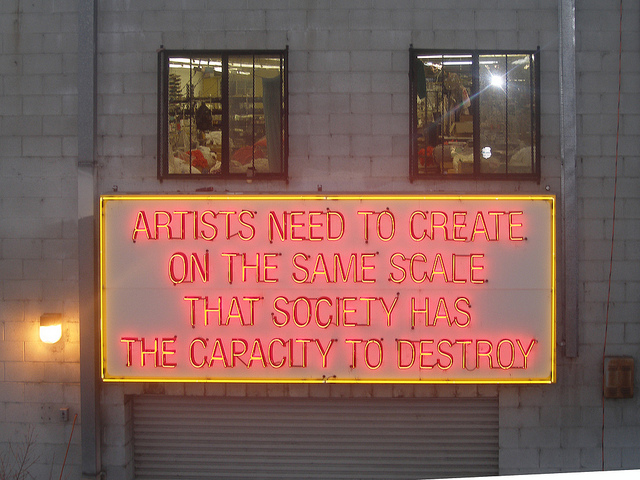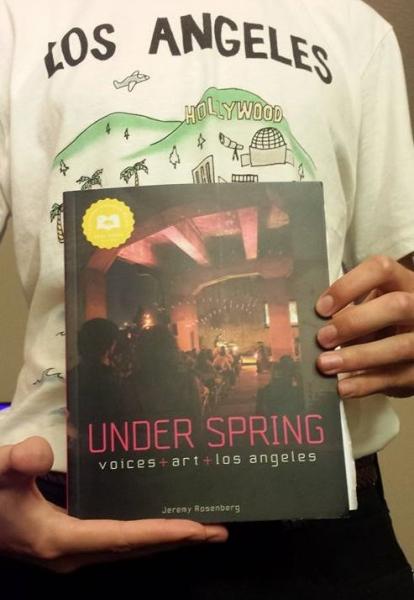Book Review: 'Under Spring' By Jeremy Rosenberg

Like a mural, Jeremy Rosenberg’s project was equal parts art and public works initiative. Instead of a run-down park or abandoned building, the idea was to revitalize this destitute nook, a kind of place no parks department would go near. Led by the Metabolic Studio with the direction of artist Lauren Bon, the space was washed, gardened, a floor built, a fence added. From 2006 to 2013, the little urban oasis staged concerts, workshops, and, my personal favorite, a wedding with a newly-ordained, kilt-wearing minister.
Rosenberg’s style mimics the communal creativeness of the actual “Under Spring” project, telling the story of the bridge by overlapping responses from 66 different interviews.
The interviewees span the entire range of people that interacted with either the Spring Bridge or the “Under Spring” project—from taggers, to activist artists, to L.A.-centric historical scholars, to homeless veterans, to impressed passersby. Through their intermingled anecdotes and commentaries, Rosenberg gives you a well-rounded, flowing narrative that touches on anthropology, L.A. history, issues of class and race and the importance of preserving public spaces.
SEE ALSO: People St. Program Adds Green Space To L.A.

The shifts in vocabulary and tone as the book moves across socioeconomic groups are noticeable, yet Rosenberg maintains a cohesive train of thought, so it all feels cooperative. But what's really cool and special about the book’s account is that it isn't self-congratulatory; it doesn’t dwell on utopian ideals. There’s a serious strain of self-questioning running through the “Under Spring” project, as artists try to walk the fine line between revitalization and the more problematic gentrification that characterizes most city prettying.
For a public space to be a public space, it can’t exclude the poverty stricken communities it’s built around, nor displace the minorities that make up Los Angeles’s culture. And the book’s style tries to embody that conversation, giving no more weight to an academic’s ruminations on the architectural qualities of the bridge, than to a homeless man’s account of hitching rides on the trains that would pass.
Overall, the artists involved are convinced that the net effect of revitalization is positive.
“We have made too much of a policy of scorched lands in our cities,” says Manuel Castells in the book, a professor of journalism at USC. With so much hunger to build “up and out”, renovation and improvement on what’s already here takes a backseat, leaving behind a “broken windows” effect that fosters violence and drug-abuse. Something like “Under Spring” works with what we’ve got, building in small gathering places that can be hotbeds of art and conversation.
In that regard Rosenberg’s book is a nonfictional call-to-action, advocating Metabolic Studio’s grassroots approach to taking back the city. A strategy of beautification that recommends taking stock of the potential and cultural content of the ugly concrete, the degenerated places.
Being into the environment and architecture and history, my powers of critiquing were compromised—I was naturally disposed to enjoy this book. It's not for everyone. Though there's plenty of action and violence and direction imbedded in the personal accounts of interviewees, the book as a whole reads kind of like an especially creative documentary. Still, I would recommend it to all those non-me's out there looking for something with a new narrative flare, or a little taste of what it means to live and participate in this big, scary urbanity.
Get the book here.



